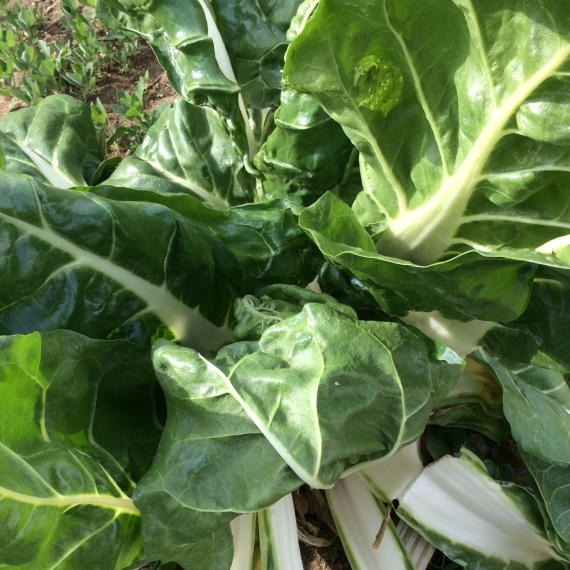
I have written a lot about foraging at various times in the past, but it occurs to me that there was never a better time to bring it up again. And if you are not willing to commit the time to learning foraging in general, then learn two weeds: amaranth and lambs quarters. These two are worldwide and ubiquitous, mild-flavored and easy to use, and in warm weather they are nearly always somewhere nearby.
The botanical names are Chenopodium berlandieri for lambsquarters and Amaranthus (various species) for amaranth. You can see them above coming up in a pot near my porch, lambsquarters toward the top of the photo and amaranth further down, and they come up everywhere that I water a piece of soil. They both get huge but are best when young and tender, and both are available from May to August. Both have mild flavor and are a reasonable substitute for spinach. Both are nutritional powerhouses. And both need to be carefully identified if you aren’t familiar with them, as does any unfamiliar food.

This is the book I recommend as your first foraging book, because the plants are widely available, Dr. Kallas is an acknowledged authority, and the information on identification is impeccable. Get your IDs down cold. Not because there are any poisonous look-alikes, but because it’s the right way to approach foraging. The book also contains excellent information on kitchen preparation and cooking.
Now that you know exactly what plants you are dealing with, how do you want to prepare them? The possibilities draw from all the cuisines of the world. I love greens as a simple stirfry with some ginger and oyster sauce to be eaten with rice or by itself, and I make gallons of the Greek mixture called Horta, flavored with garlic, herbs, and black olives, to keep in the refrigerator or freezer and eat by itself on a piece of sourdough bread or baked into a quiche or hortapita, or any other way. Horta also makes a great base to land some fried or hard boiled eggs on, and is a good side dish for nearly anything. Smoked pork has a magical affinity with greens, and some ham trimmings or meat pulled from a leftover smoked rib is a great addition to greens sautéed with onion and garlic. Rick Bayless has published some tasty variations on a theme of greens tacos (here’s just one) and he uses chard or spinach but using your own weeds is an easy substitution. Combinations of greens and beans or chickpeas are classic. Pile seasoned horta into salted zucchini shells with some feta or Parmesan and a topping of pine nuts and bake until done, serving with or without seasoned tomato sauce. Or click the “greens” heading in the sidebar of this blog for more greens talk and recipes.
When I gather a bunch of greens I try to wash them immediately and, if possible, blanch them briefly or stir-fry in neutral oil just until wilted down, so that they use minimal refrigerator space and are ready to use in seconds when a quick meal is needed.
Be aware that both these plants can get enormous, up to ten feet in good soil, so grab them young if you want to grow anything else in that space.










